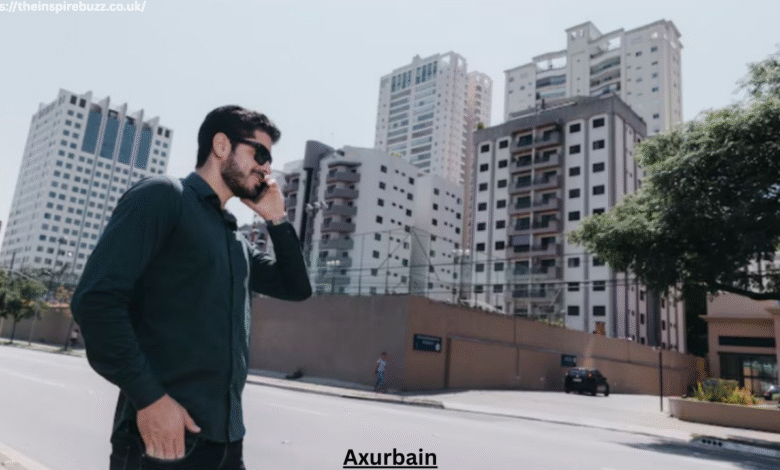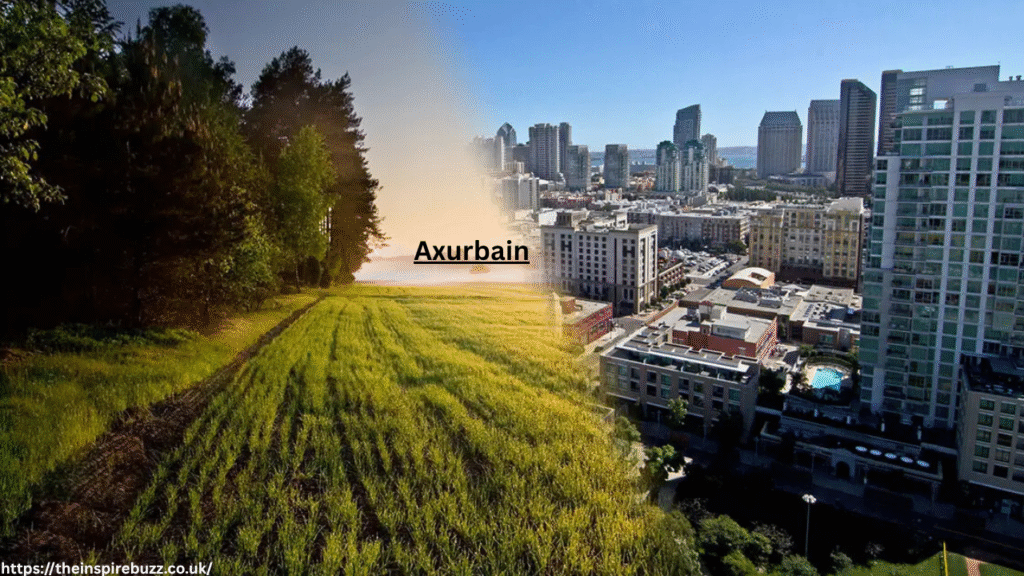Axurbain Revolutionizing Urban Experiences Through Smart Integration

In an era where cities are growing at an unprecedented pace, the demand for smarter, more sustainable urban environments has never been more pressing. Enter Axurbain, a cutting-edge concept that blends technology, urban planning, and community-centric design into one cohesive ecosystem. The term may sound futuristic, but it represents a very present and necessary shift in how we experience city life.
Axurbain symbolizes a new generation of urbanism—one that emphasizes smart integration, data-driven infrastructure, and human-centered innovation. As cities battle issues like overpopulation, traffic congestion, pollution, and housing shortages, Axurbain presents a holistic framework to solve these problems from the inside out. By harmonizing technology with urban design, it turns complex metropolitan challenges into manageable, efficient systems.
This article explores the fundamental concepts behind Axurbain, the technologies that support it, real-world examples where it is being implemented, and what the future holds. Whether you’re a city planner, tech enthusiast, or just a curious resident wondering how urban life could be improved, this deep dive into Axurbain will offer fresh insights into the city of tomorrow.
What is Axurbain? A Deep Dive into Its Concept and Origins
Axurbain is more than a buzzword—it’s a comprehensive vision of future living that integrates technological systems with human behavior, environmental needs, and spatial design. At its core, Axurbain focuses on smart, adaptable urban frameworks that grow in tandem with the needs of the population. The term appears to be a fusion of “axis” (suggesting a central line or pivot) and “urbain” (French for urban), hinting at a centralized, intelligent approach to urban development.
The origin of the Axurbain concept stems from interdisciplinary collaboration among urban planners, technologists, environmental scientists, and sociologists. As cities began facing the brunt of climate change, overpopulation, and failing infrastructure, there was a growing need for a more agile and responsive model of urban development. Axurbain emerged as a solution that isn’t just about building smart cities—it’s about building resilient and people-centric environments powered by data, sensors, and automation.
Unlike traditional urban planning, which often operates in silos, Axurbain encourages cross-functional collaboration. It aims to synchronize transportation systems, energy grids, housing developments, and social spaces into one seamless, responsive unit. Its philosophy leans on principles like inclusivity, accessibility, and long-term sustainability. In doing so, Axurbain becomes a living, breathing organism that evolves with its citizens.
Core Components and Technologies Behind Axurbain

Axurbain’s success lies in the fusion of cutting-edge technology and smart design principles. At the forefront is the Internet of Things (IoT), which connects urban infrastructure—from traffic lights and waste bins to water supply systems and surveillance cameras—into an intelligent network. This network collects real-time data, enabling city operators to make proactive decisions, such as rerouting traffic during congestion or optimizing energy usage during peak hours.
Artificial Intelligence (AI) is another cornerstone of the Axurbain ecosystem. AI models analyze data from IoT devices to predict maintenance issues, suggest urban layout improvements, or even personalize public services. Imagine a bus system that learns passenger flow and adjusts its schedule automatically—that’s the Axurbain advantage. AI ensures that the city remains not only reactive but predictively adaptive to emerging needs.
Sustainability is embedded in the Axurbain framework through renewable energy integration, green building materials, and eco-conscious infrastructure. Smart grids powered by solar or wind energy help reduce carbon footprints, while vertical gardens and green rooftops are designed to combat urban heat islands. These innovations work in harmony with traditional architecture, ensuring that development is both modern and mindful of the environment.
Finally, data transparency and community-driven input make Axurbain truly democratic. Citizens are not just users of the city—they are stakeholders. Through open data portals, mobile apps, and digital forums, they can participate in decision-making processes, enhancing both governance and public trust.
Axurbain in Action: Real-World Applications and Case Studies
The principles of Axurbain are already being applied in cities around the world, often under the umbrella of “smart city” initiatives. However, what distinguishes Axurbain is its human-centered ethos, where technology complements daily life rather than disrupts it. One standout example is Barcelona, where urban mobility has been reimagined through “superblocks”—clusters of city blocks closed off to through traffic, turning them into vibrant pedestrian zones. These superblocks use sensor data to monitor air quality, noise levels, and public usage, aligning perfectly with Axurbain ideals.
In Singapore, Axurbain principles are evident in the Smart Nation program, which integrates digital ID systems, cashless payments, and predictive traffic flow management to streamline everyday life. Public feedback is encouraged through open government platforms, ensuring that developments are citizen-driven and responsive.
Another noteworthy implementation can be found in Amsterdam, where an open-data approach to urban development has empowered local developers and businesses to build custom solutions for energy, mobility, and public safety. Community involvement and digital experimentation are encouraged, illustrating how Axurbain blends top-down planning with grassroots innovation.
These examples highlight the transformative potential of Axurbain. By making cities more intuitive, connected, and sustainable, it elevates the quality of life while promoting civic engagement and environmental responsibility.
The Future of Axurbain: Trends, Innovations, and Potential Challenges
The future of Axurbain is brimming with possibility. As technologies like 5G, blockchain, and autonomous vehicles mature, they will become integral to the Axurbain framework. For instance, 5G can enable ultra-fast communication between sensors, vehicles, and city systems, while blockchain can secure citizen data and ensure transparent transactions in urban services.
One of the most exciting developments on the horizon is the rise of “digital twins”—virtual replicas of entire cities. These simulations allow planners to test infrastructure changes, emergency scenarios, or public behavior without real-world consequences. It adds another layer of intelligence and foresight to the Axurbain model.
Despite its promise, Axurbain faces challenges. Budget constraints, legacy infrastructure, and regulatory hurdles can impede implementation. Moreover, there is a pressing need to protect user data and privacy, especially as cities become more data-reliant. Transparent governance and ethical frameworks must evolve in tandem with technological progress to ensure that Axurbain doesn’t become an instrument of surveillance or inequality.
Nonetheless, the path forward is promising. With greater public-private collaboration, inclusive policymaking, and continual innovation, Axurbain has the potential to redefine urban existence—not just in megacities, but in towns and suburban regions worldwide.
Conclusion
Axurbain is not merely a futuristic concept—it is a transformative vision that is actively shaping the present and future of urban living. By harmonizing smart technology, sustainable practices, and participatory governance, Axurbain delivers a blueprint for cities that are more livable, equitable, and resilient. It responds dynamically to challenges, emphasizes the human experience, and evolves with its population’s needs.
As we navigate the complexities of modern urbanization, adopting Axurbain principles could be the key to building better cities—ones that think, feel, and grow alongside us. Whether through AI-managed transit, eco-smart buildings, or digital citizen platforms, the possibilities of Axurbain are only beginning to unfold.
Frequently Asked Questions (FAQs)
1. Is Axurbain a company, concept, or a product?
Axurbain is a concept that integrates smart technologies with urban planning to create sustainable and human-centric cities.
2. How does Axurbain differ from traditional smart city initiatives?
Unlike many smart city models that prioritize technology over people, Axurbain balances innovation with inclusivity and environmental mindfulness.
3. What are the benefits of Axurbain for everyday city dwellers?
Improved public services, reduced pollution, enhanced mobility, and better citizen participation are just a few key benefits.
4. Can smaller towns adopt Axurbain principles too?
Yes. Axurbain’s flexible framework can be tailored for small towns and communities seeking smarter infrastructure and better resource management.
5. What role do governments play in implementing Axurbain?
Governments are key enablers—providing funding, policy frameworks, and public engagement channels to support Axurbain ecosystems.


